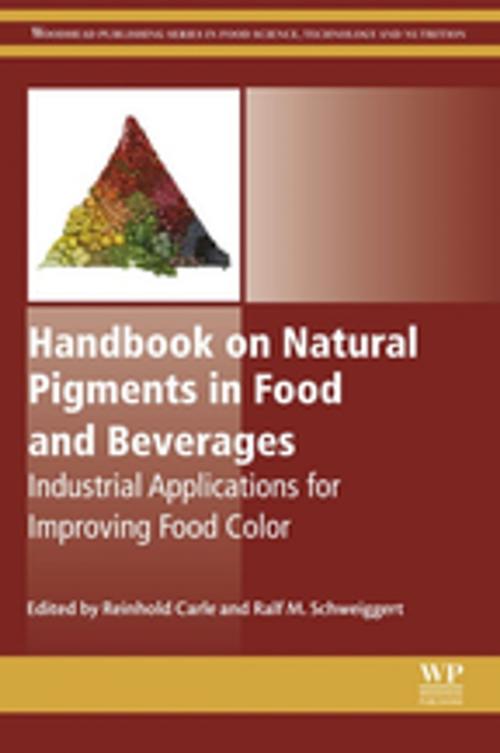Handbook on Natural Pigments in Food and Beverages
Industrial Applications for Improving Food Color
Nonfiction, Science & Nature, Technology, Food Industry & Science| Author: | ISBN: | 9780081003923 | |
| Publisher: | Elsevier Science | Publication: | April 20, 2016 |
| Imprint: | Woodhead Publishing | Language: | English |
| Author: | |
| ISBN: | 9780081003923 |
| Publisher: | Elsevier Science |
| Publication: | April 20, 2016 |
| Imprint: | Woodhead Publishing |
| Language: | English |
Handbook on Natural Pigments: Industrial Applications for Improving Food Colour is unique in its approach to the improvement of food colors. The book is written with industrial applications in mind, with each chapter focusing on a color solution for a specific commodity that will provide food scientists with a one-stop, comprehensive reference on how to improve the color of a particular food product.
The first section of the book looks at the legal frameworks which underpin natural food colorings, also investigating the consumer expectations of food color. The second section of the book focuses on specific industrial applications of natural colorants with chapters covering the use of natural colorants in aqueous food products, cereal-based foods, and meat products, amongst many other topics.
The various pigments which can be used to effectively color these commodities are presented with information on safety and testing included throughout. The final section in the book looks at recent developments and future perspectives in natural food colorings. There are chapters which cover the health benefits of natural pigments, the use of novel fruits and vegetables in pigments, and stable natural solutions for blue colorings.
- Presents recent advances in consumer demand and worldwide legislation regarding natural food colorants
- Discusses the use of natural food colorants for one specific product category per chapter rather than one pigment class per chapter – this makes the book extremely useable for industrialists working in a specific sector
- Contains a comprehensive array of product-specific coloration approaches, from using pigment-enriched feed additives to the direct addition of color formulations
Handbook on Natural Pigments: Industrial Applications for Improving Food Colour is unique in its approach to the improvement of food colors. The book is written with industrial applications in mind, with each chapter focusing on a color solution for a specific commodity that will provide food scientists with a one-stop, comprehensive reference on how to improve the color of a particular food product.
The first section of the book looks at the legal frameworks which underpin natural food colorings, also investigating the consumer expectations of food color. The second section of the book focuses on specific industrial applications of natural colorants with chapters covering the use of natural colorants in aqueous food products, cereal-based foods, and meat products, amongst many other topics.
The various pigments which can be used to effectively color these commodities are presented with information on safety and testing included throughout. The final section in the book looks at recent developments and future perspectives in natural food colorings. There are chapters which cover the health benefits of natural pigments, the use of novel fruits and vegetables in pigments, and stable natural solutions for blue colorings.
- Presents recent advances in consumer demand and worldwide legislation regarding natural food colorants
- Discusses the use of natural food colorants for one specific product category per chapter rather than one pigment class per chapter – this makes the book extremely useable for industrialists working in a specific sector
- Contains a comprehensive array of product-specific coloration approaches, from using pigment-enriched feed additives to the direct addition of color formulations















